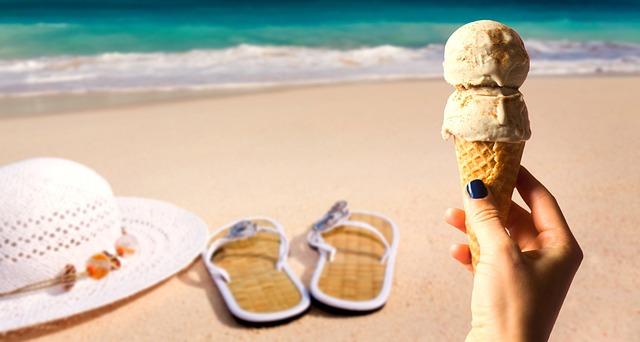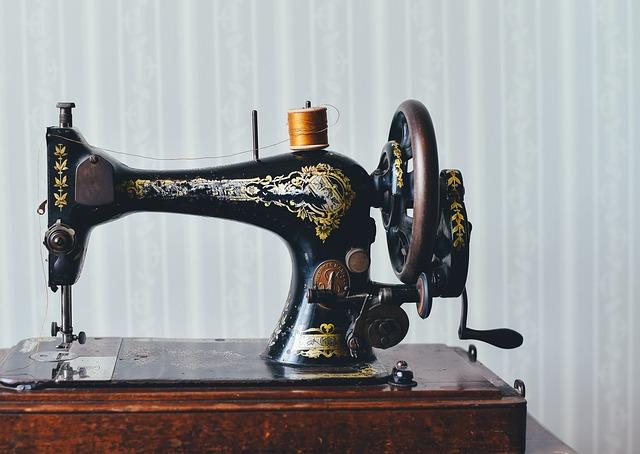Cold Plunge vs Ice Bath: Decoding Cold Therapy Variations

Are you ready to take the plunge into the icy world of cold therapy? Whether you’re an athlete looking to speed up your recovery or simply aiming to boost your overall well-being, understanding the variations of cold therapy can make all the difference. In this article, we will unravel the mysteries of the cold plunge and the ice bath, shedding light on their unique benefits and helping you choose the perfect cold therapy variation for your needs. So, grab a warm blanket, sit back, and prepare to dive into the invigorating world of cold therapy.
Contents
- 1. Understanding the Science Behind Cold Therapy: Exploring the Effects on the Body and Mind
- 2. Cold Plunge: Advantages, Considerations, and How to Maximize Its Benefits
- 3. Breaking Down Ice Baths: Key Differences, Potential Risks, and Best Practices
- 4. Tailoring Cold Therapy to Your Needs: Choosing Between Cold Plunge and Ice Baths
- 5. Exploring the Potential Health Benefits of Cold Therapy: Boosting Immunity, Accelerating Recovery, and More
- 6. Safety First: Precautions and Guidelines for a Successful Cold Therapy Session
- 7. Enhancing the Cold Therapy Experience: Tips for Optimal Results and Maximum Comfort
- 8. Beyond the Cold: Unlocking the Additional Elements of a Complete Cold Therapy Routine
- 9. Do’s and Don’ts: Common Mistakes to Avoid When Incorporating Cold Therapy into Your Wellness Regimen
- 10. Decoding Cold Therapy Variations: Understanding the Nuances and Choosing the Right Approach for You
- Cold Plunge vs Ice Bath: Decoding Cold Therapy Variations
1. Understanding the Science Behind Cold Therapy: Exploring the Effects on the Body and Mind
Cold therapy, in various forms, has been used for centuries to promote physical and mental well-being. Two popular methods of cold therapy are cold plunges and ice baths, each offering unique benefits to the body and mind.
-
Cold Plunges:
- Definition: A cold plunge involves plunging the body into cold water with temperatures hovering between 45°F and 55°F (7°C and 13°C).
- Physical Benefits: The immediate immersion in cold water stimulates vasoconstriction, causing blood vessels to constrict, which helps reduce inflammation, speeds up muscle recovery, and alleviates soreness. It can also boost the immune system and increase circulation.
- Mental Benefits: Cold plunges can provide a rush of endorphins, enhance mental clarity, and improve mood. Regular exposure to cold water over time may also help to build mental toughness and resilience.
- Ice Baths:
- Definition: Ice baths involve submerging the body in water with ice cubes or ice packs, typically at temperatures ranging from 50°F to 59°F (10°C to 15°C).
- Physical Benefits: Ice baths help to reduce swelling and inflammation, ease muscle pain, and reduce lactic acid buildup following intense workouts or sports activities. The cold temperature also constricts blood vessels, reducing blood flow to injured areas and minimizing tissue damage.
- Mental Benefits: Ice baths can offer a similar rush of endorphins as cold plunges, improving mood and mental well-being. The intense cold can also help with stress reduction and improve sleep quality.
While both cold plunges and ice baths have their advantages, it’s essential to listen to your body and choose the method that suits you best. Both methods stimulate the body and mind in different ways, providing unique benefits for post-workout recovery, mental clarity, and overall well-being. So, whether you’re opting for the invigorating cold plunge or the soothing ice bath, incorporating cold therapy into your routine can be a transformative experience for your body and mind.
2. Cold Plunge: Advantages, Considerations, and How to Maximize Its Benefits
When it comes to cold therapy, one popular variation is the cold plunge. Many people confuse it with an ice bath, but there are some key differences. Understanding these differences can help you make informed choices and optimize the benefits of cold therapy.
Advantages of Cold Plunge:
- Enhanced muscle recovery: Cold plunges can reduce inflammation and muscle soreness after intense workouts, promoting faster recovery.
- Better circulation: Immersing in cold water can constrict blood vessels and improve blood circulation, delivering oxygen and nutrients more efficiently throughout the body.
- Increased alertness: The shock of cold water stimulates the production of adrenaline, leaving you feeling more energized and alert.
Considerations for Cold Plunge:
- Duration and temperature: The ideal temperature for a cold plunge is between 50-59°F (10-15°C) and the recommended duration is around 5-10 minutes.
- Gradual adaptation: If you’re new to cold therapy, start with shorter durations and gradually increase the time as your body adapts to the cold.
- Health conditions: Consult with a healthcare professional before incorporating cold plunges into your routine, especially if you have conditions like hypertension or heart problems.
Maximizing the Benefits:
To fully maximize the benefits of your cold plunge, consider these tips:
- Combine with contrast therapy: Alternating between hot and cold therapies can further enhance circulation and stimulate the body’s natural healing processes.
- Cold plunge after exercise: Taking a cold plunge immediately after your workout can help reduce muscle inflammation and speed up recovery.
- Focus on deep breathing: Practice controlled breathing techniques while in the cold water to help relax your body and mind.
Remember, cold plunge therapy may not be suitable for everyone, so it’s important to listen to your body and adjust accordingly. If done correctly, cold plunges can offer an invigorating and rejuvenating experience.
3. Breaking Down Ice Baths: Key Differences, Potential Risks, and Best Practices
Cold therapy has gained popularity in recent years for its potential health benefits. Two common forms of cold therapy are the cold plunge and ice bath. While they may seem similar, there are key differences between the two, as well as potential risks to be aware of. In this article, we will break down these variations, explore their benefits, and share best practices for incorporating cold therapy into your routine.
Key Differences:
- Temperature: The cold plunge typically involves immersing yourself in water that is between 50-60°F (10-15°C), while an ice bath requires water temperature to be around 40°F (4°C) or lower. The colder temperature of the ice bath can provide a more intense and immediate cold shock to the body.
- Duration: Cold plunges are often shorter in duration, ranging from 2-5 minutes, while ice baths tend to last longer, typically around 10-15 minutes. The extended time in an ice bath allows for a deeper cooling effect on the body.
Potential Risks:
- Hypothermia: Spending an excessive amount of time in extremely cold water can lead to hypothermia, a potentially dangerous condition where the body loses heat faster than it can generate. It is important to monitor the duration of your cold therapy sessions and never exceed recommended time limits.
- Shock to the System: While cold therapy can have numerous benefits, it is important to note that the body may react differently to the extreme cold. Some individuals may experience heightened heart rate or difficulty breathing. If you have any pre-existing health conditions, it is crucial to consult with a healthcare professional before attempting cold therapy.
Best Practices:
- Gradual Progression: If you are new to cold therapy, it is recommended to start with shorter durations and higher water temperatures, gradually working your way towards colder temperatures and longer durations. This allows your body to acclimate to the cold therapy gradually.
- Proper Preparation: Before engaging in cold therapy, ensure you are properly hydrated and have warmed up by doing light exercises or stretches. This can help prevent muscle strains or cramps during the cold exposure.
- Post-Therapy Practices: After your cold therapy session, it is important to rewarm your body gradually. This can be done by taking a warm shower or engaging in gentle movements to encourage blood flow and avoid sudden temperature shifts.
While cold plunges and ice baths both offer unique experiences and benefits, it is essential to approach them with caution and listen to your body. Always prioritize safety and consult with a healthcare professional if you have any concerns or health conditions that may impact your ability to engage in cold therapy.
4. Tailoring Cold Therapy to Your Needs: Choosing Between Cold Plunge and Ice Baths
Cold Therapy is a popular method used by athletes and wellness enthusiasts to promote muscle recovery, reduce inflammation, and improve overall performance. While there are various forms of cold therapy available, two of the most common options are Cold Plunge and Ice Baths. In this post, we will decode these variations of cold therapy and help you choose the best option to suit your needs.
-
Temperature and Duration: Cold Plunge typically involves immersing yourself in water that is chilled to a specific temperature, usually around 50 degrees Fahrenheit (10 degrees Celsius). On the other hand, Ice Baths require submerging yourself in water filled with ice or ice packs, resulting in a lower temperature of approximately 40 degrees Fahrenheit (4 degrees Celsius). Both methods are effective, but the duration of each treatment may vary. Cold Plunges are often shorter sessions, typically lasting around 5-10 minutes, whereas Ice Baths can range between 10-20 minutes.
-
Recovery Benefits: Both Cold Plunge and Ice Baths offer similar benefits when it comes to muscle recovery and reducing inflammation. The cold temperatures constrict blood vessels, which can help to reduce swelling, relieve pain, and flush out metabolic waste products. Additionally, the sudden drop in temperature can also lead to a release of endorphins, providing a natural mood boost and reducing stress.
- Personal Preference and Convenience: When deciding between Cold Plunge and Ice Baths, it’s essential to consider personal preferences and convenience. Some individuals may find the idea of submerging themselves in ice-cold water more challenging, while others may prefer the invigorating sensation it provides. Additionally, Ice Baths require access to a sufficient amount of ice or ice packs, which may not always be readily available. Cold Plunges, on the other hand, can be done using a specially designed cold plunge pool or even a bathtub filled with cold water.
In conclusion, both Cold Plunge and Ice Baths are effective forms of cold therapy that can benefit your overall well-being. Consider factors such as temperature, duration, recovery benefits, personal preference, and convenience when choosing between the two. Ultimately, the goal is to find a cold therapy variation that you enjoy and can incorporate into your routine to reap the maximum benefits for your body and mind.
5. Exploring the Potential Health Benefits of Cold Therapy: Boosting Immunity, Accelerating Recovery, and More
Cold therapy, also known as cryotherapy, has gained significant attention for its potential health benefits. From boosting immunity to accelerating recovery, this age-old practice has been used to leverage the power of cold temperatures for various purposes. Two popular variations of cold therapy are cold plunges and ice baths. While they both involve immersing the body in cold water, there are subtle differences between the two techniques.
Cold plunges typically involve immersing the body in water at a temperature of around 50 degrees Fahrenheit or lower. This sudden shock of cold triggers several physiological responses in the body, including vasoconstriction and a release of endorphins. As a result, cold plunges have been credited with numerous benefits, such as reducing inflammation, boosting metabolism, and enhancing mood and mental clarity.
On the other hand, ice baths involve immersing the body in water filled with ice cubes or bags of ice. The temperature of the water is typically lower than that of cold plunges, often ranging from 32 to 40 degrees Fahrenheit. Ice baths are often favored by athletes and sports enthusiasts for their potential to reduce muscle soreness and inflammation, promote faster recovery, and improve athletic performance.
To understand the potential benefits of cold therapy variations, it’s crucial to consider factors such as time, temperature, and personal preference. Both cold plunges and ice baths can be effective in their own right, and individuals may find one method more suitable or tolerable than the other. It’s essential to consult with a healthcare professional or cold therapy expert to determine the best approach based on one’s unique needs and physical condition.
In summary, cold therapy offers a range of potential health benefits, including immunity-boosting and accelerated recovery. Cold plunges and ice baths are two popular variations of this practice, each with its own unique characteristics and advantages. By incorporating cold therapy into a regular wellness routine and tailoring it to individual preferences, individuals can explore the potential benefits of cold therapy and optimize their overall well-being.
6. Safety First: Precautions and Guidelines for a Successful Cold Therapy Session
Cold therapy, whether through a cold plunge or an ice bath, can provide numerous benefits for both physical and mental well-being. However, it is important to ensure that you are taking the necessary precautions to have a safe and successful session. Here are some guidelines to follow:
- Consult with a healthcare professional: Before engaging in any cold therapy, it is always recommended to consult with a healthcare professional, especially if you have any pre-existing medical conditions.
- Start slow: If you are new to cold therapy, it’s best to start with shorter sessions and gradually increase the duration as your body adjusts to the cold.
- Monitor your body: Pay attention to any adverse reactions during the session, such as dizziness, numbness, or extreme discomfort. If you experience any of these, it is crucial to end the session immediately.
- Keep a safe temperature range: Ensure that the water temperature in your cold plunge or ice bath stays within a safe range, typically between 50°F (10°C) and 60°F (15°C). Use a thermometer to regularly check the temperature.
- Hydrate before and after: Cold therapy can be dehydrating, so it’s essential to drink plenty of water before and after your session to stay properly hydrated.
By following these safety precautions and guidelines, you can enjoy the benefits of cold therapy while minimizing any potential risks or discomfort. Remember, it’s always better to err on the side of caution when it comes to your health and well-being.
7. Enhancing the Cold Therapy Experience: Tips for Optimal Results and Maximum Comfort
When it comes to enhancing the cold therapy experience, there are a few key tips to keep in mind. Whether you’re using a cold plunge or an ice bath, these variations of cold therapy can provide excellent results for recovery and performance. Here are some tips to ensure optimal results and maximum comfort during your cold therapy sessions:
1. Temperature Control: Adjusting the temperature of your cold plunge or ice bath can make a significant difference in the effectiveness of your therapy. Aim for a temperature between 50 and 60 degrees Fahrenheit (10 to 15 degrees Celsius) to achieve the desired therapeutic benefits.
2. Duration: It’s important to gradually increase the duration of your cold therapy sessions. Start with shorter durations, such as 3-5 minutes, and gradually work your way up to longer sessions, up to 10 minutes or more. This allows your body to acclimate to the cold and reap the full benefits without overdoing it.
3. Breathing Exercises: To maximize the benefits of cold therapy, practice deep, controlled breathing during your sessions. This helps calm the mind, relax the body, and enhance the overall therapeutic effect. Focus on slow inhalations and exhalations, allowing yourself to fully embrace the cold and stimulate the body’s natural healing processes.
4. Hydration: Staying hydrated is crucial during cold therapy. It’s recommended to drink plenty of water before and after your sessions to prevent dehydration and support your body’s recovery process.
By following these tips, you can enhance your cold therapy experience and achieve optimal results and maximum comfort. Remember to always listen to your body and adjust the intensity and duration of your sessions accordingly. Stay consistent with your cold therapy routine, and you’ll soon reap the benefits of improved recovery, reduced inflammation, and enhanced performance.
8. Beyond the Cold: Unlocking the Additional Elements of a Complete Cold Therapy Routine
When it comes to cold therapy, there are various methods that people use to reap the benefits. Two popular variations are the cold plunge and the ice bath. While they both involve immersing yourself in cold water, there are key differences between the two.
Cold Plunge
- A cold plunge typically involves immersing yourself in water with temperatures ranging from 50°F to 60°F.
- It is commonly used in spa settings and is often preceded by a warm sauna or steam session.
- The cold plunge is known for its invigorating and revitalizing effects on the body, helping to improve circulation and reduce muscle soreness.
Ice Bath
- An ice bath, on the other hand, features much colder water, often including the addition of ice cubes or packs to bring the temperature down to a chilling 32°F to 59°F.
- Athletes and individuals seeking muscle recovery and inflammation reduction frequently turn to ice baths.
- This method constricts blood vessels and slows down metabolic activity, aiding in muscle repair and decreasing post-exercise inflammation.
While both the cold plunge and ice bath offer cold therapy benefits, it’s important to consider personal preferences, the desired effect, and any existing health conditions before choosing one over the other. Whether you prefer the quick wake-up call of a cold plunge or the intense muscle recovery of an ice bath, incorporating these variations into your cold therapy routine can take the benefits to the next level.
9. Do’s and Don’ts: Common Mistakes to Avoid When Incorporating Cold Therapy into Your Wellness Regimen
Incorporating cold therapy into your wellness regimen can offer a wide range of benefits, but it’s essential to know the do’s and don’ts to ensure you’re maximizing its effectiveness and avoiding common mistakes. Here are some guidelines to follow when exploring cold therapy variations such as cold plunge and ice baths:
Do’s:
1. Start with gradual exposure: Begin with short durations of cold exposure and gradually increase the time as your body adapts. This allows your body to acclimate to the cold temperatures without overwhelming your system.
2. Stay hydrated: Drinking water before and after your cold therapy session helps maintain your body’s fluid balance and prevents dehydration.
3. Practice deep breathing: Cold therapy can be intense, so practicing deep breathing exercises during your session can help you relax and promote blood flow.
Don’ts:
1. Don’t overdo it: While cold therapy can be invigorating, it’s important not to exceed recommended exposure times. Prolonged exposure to extreme cold temperatures can lead to hypothermia and other adverse effects.
2. Avoid submerging your entire head: Cold therapy is generally safe, but submerging your head in extremely cold water can increase the risk of ear and sinus problems. Keep your head above water or use cold therapy devices specifically designed for facial exposure.
3. Don’t use if you have certain health conditions: Cold therapy may not be suitable for everyone. If you have cardiovascular problems, respiratory issues, or if you’re pregnant, it’s best to consult with a healthcare professional before incorporating cold therapy into your wellness routine.
Remember that cold therapy variations like cold plunge and ice baths can offer incredible benefits when practiced safely and responsibly. By following these do’s and don’ts, you can make the most out of your cold therapy experience while minimizing potential risks.
10. Decoding Cold Therapy Variations: Understanding the Nuances and Choosing the Right Approach for You
Cold Plunge vs Ice Bath: Decoding Cold Therapy Variations
Cold therapy, also known as cryotherapy, has gained popularity in recent years for its various health benefits. It involves exposing the body to extremely cold temperatures, which can have a positive impact on physical recovery, mental well-being, and overall health. Two common variations of cold therapy are the cold plunge and the ice bath. While both methods involve exposing the body to cold temperatures, there are nuanced differences that may make one approach more suitable for you than the other.
Cold Plunge
A cold plunge typically refers to submerging your body in water at a temperature of around 50°F to 60°F (10°C to 15.5°C). This method is often used in spas, where individuals immerse themselves in a pool or tub filled with cold water for a short duration, typically a few minutes. The cold plunge helps stimulate circulation, reduce inflammation, and enhance muscle recovery. It can also provide a refreshing and invigorating experience, improving overall energy levels.
- Benefits of Cold Plunge:
- Improved blood flow and circulation
- Reduced muscle soreness and inflammation
- Boosted immune system
- Increase in energy levels
- Feeling refreshed and invigorated
Ice Bath
On the other hand, an ice bath involves immersing the body in a tub filled with ice-cold water, typically at a temperature around 32°F to 50°F (0°C to 10°C) for a longer duration, ranging from 5 to 20 minutes. The aim is to lower the body’s temperature significantly, which can induce a stronger physiological response. Ice baths are commonly used by athletes and trainers to aid in muscle recovery, reduce inflammation, and accelerate healing after intense physical activity.
- Benefits of Ice Bath:
- Reduced muscle and joint pain
- Quicker recovery from intense workouts
- Decreased inflammation and swelling
- Enhanced circulation and removal of waste products
- Improved overall athletic performance
When deciding between a cold plunge and an ice bath, consider your personal goals, preferences, and any specific health conditions you may have. Both methods offer unique benefits, and it is essential to choose the approach that aligns with your individual needs. Consulting with a healthcare professional or a qualified trainer can provide further guidance in selecting the right form of cold therapy for your situation.
In conclusion, when it comes to cold therapy, understanding the differences between a cold plunge and an ice bath can make all the difference in achieving optimal benefits. While both methods offer their fair share of advantages, it ultimately boils down to personal preference and goals. Whether you prefer the invigorating rush of a cold plunge or the controlled, full-body immersion of an ice bath, one thing is for certain – both options can effectively enhance recovery, boost circulation, and promote overall well-being. So, the next time you’re ready to take the plunge into the world of cold therapy, remember to make an informed decision that aligns with your needs and desires. Stay cool, stay strong, and reap the countless rewards of these chilly treatments.














